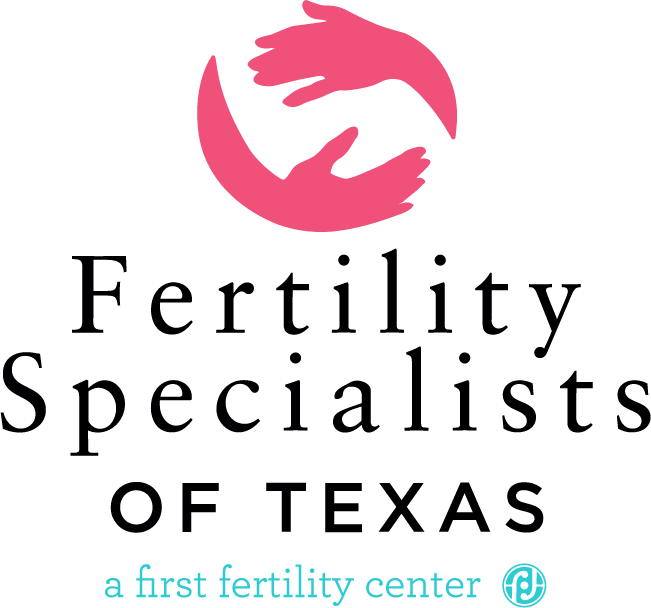In Vitro Fertilization
IVF Process
We’re committed to turning your family dreams into reality at Fertility Specialists of Texas. Our state-of-the-art technology, board-certified fertility experts, and compassionate, patient-first care philosophy are here to guide you every step of the way.
With convenient locations across Dallas, Plano, and beyond, our advanced IVF process is designed for couples, single parents, and LGBTQ+ couples and individuals who want personalized, effective treatment.

Step 1: New Patient Consultation
Your journey begins with a personalized consultation, during which our team of fertility specialists takes the time to understand your unique history and goals. During this one-on-one meeting, you’ll learn about the IVF process, ask questions about your treatment plan, and discuss what you can expect from each step.
Step 2: Fertility Testing
After your consultation, our specialists recommend comprehensive testing to uncover any factors affecting your fertility. We review your medical and family history, perform bloodwork, ultrasounds, and, if needed, minimally invasive procedures to check for conditions such as uterine fibroids. This thorough evaluation allows us to customize your treatment plan for optimal results.
Request AppointmentStep 3: Ovarian Stimulation & Monitoring
After your personalized treatment plan is established, you’ll begin controlled ovarian stimulation. You’ll start self-administering daily injections of fertility medications (such as FSH, LH, or a combination of both) that stimulate your ovaries to develop multiple egg-containing follicles rather than the single egg produced in a natural cycle.
Over the course of 8 to 14 days, you’ll perform these injections at home while visiting our clinic regularly. During each visit, our expert team uses transvaginal ultrasounds to monitor the growth and size of your follicles and conducts blood tests to track your hormone levels (particularly estradiol). This close monitoring allows us to adjust your medication dosages in real-time, ensuring your cycle is fine-tuned for success. By tailoring the stimulation to your unique needs, we help optimize your chances of a successful egg retrieval and, ultimately, a healthy pregnancy.
Step 4: Trigger Shot & Egg Retrieval
Once your follicles have reached optimal maturity, you’ll receive a trigger shot (either hCG or Lupron) to finalize the egg maturation process. Approximately 36 hours after this injection, you’ll come to our Dallas-Fort Worth infertility clinic for your egg retrieval procedure.
During this outpatient procedure, which typically lasts 20 to 30 minutes, you’ll be given sedation to ensure your comfort. Under transvaginal ultrasound guidance, our board-certified fertility doctor gently inserts a thin needle through your vaginal wall into each follicle, carefully aspirating the follicular fluid and collecting the mature eggs. Immediately after retrieval, your eggs are transported to our state-of-the-art laboratory for evaluation and subsequent fertilization.
After the procedure, you’ll spend a short time in a recovery area as the sedation wears off. Most patients experience mild cramping or pressure, and we advise using a pain reliever like Tylenol if needed—while avoiding ibuprofen. You can typically resume normal daily activities within 48 hours, though we recommend taking the day off to rest and allow your body to recover.
Step 5: Sperm Collection
If you or your partner are providing sperm, a semen sample is collected at our clinic or via an approved method at home. Our skilled embryologists then process the sample, selecting the strongest and most active sperm. For cases where structural factors require it, sperm may be retrieved through surgical methods like testicular sperm aspiration (TESA) under the guidance of experienced urologists.
Step 6: Laboratory Fertilization & Embryo Culture
In our state-of-the-art IVF laboratory, your eggs are combined with the prepared sperm. We utilize conventional fertilization techniques—or, when needed, intracytoplasmic sperm injection (ICSI), which precisely injects a single sperm into each mature egg. The resulting embryos are cultured under controlled conditions for 3-5 days, allowing our embryologists to closely monitor their development.
About Our LabStep 7: Embryo Monitoring & Preimplantation Genetic Testing (PGT)
As your embryos develop, our dedicated IVF lab team carefully monitors each one, grading them based on health and viability. In addition, we offer preimplantation genetic testing (PGT-A and PGT-M) to screen for chromosomal abnormalities and inherited genetic conditions. This optional yet powerful tool enhances your chances of a healthy pregnancy by ensuring that only the most robust embryos are selected for transfer.
Genetic Testing & CounselingStep 8: Embryo Transfer
When the time is right, your selected embryo is transferred into your uterus. Using ultrasound guidance and a soft catheter, our experienced fertility doctor places the embryo in the optimal position within the uterine cavity. During this quick procedure, our specialists will do our best to keep you comfortable and answer any questions you have about next steps.
Step 9: The Two-Week Wait
After the embryo transfer begins the “two-week wait,” a period of anticipation as your body works toward a successful implantation. While you may be tempted to take a pregnancy test at home, we ask that you wait until you return to our clinic, as drug store tests may provide false results. Our specialists remain available to support you during this emotional time, and a follow-up blood test will confirm your pregnancy.
Take the First Step on Your Journey to Parenthood
At Fertility Specialists of Texas, we’re committed to helping you overcome fertility challenges and build the family you’ve dreamed of. Let our expertise and compassionate team guide you every step of the way—from your first consultation to the moment your family grows.
Quick Links for
In Vitro Fertilization (IVF)
Which Treatment is Right for You?
Schedule an introductory appointment with us, and our specialists can determine which path will be best to begin your journey to parenthood.
